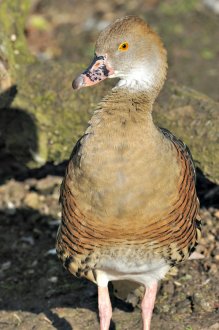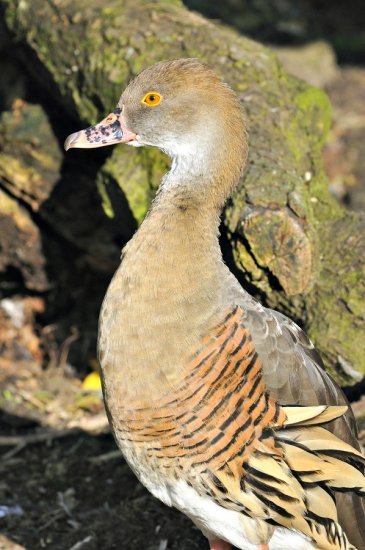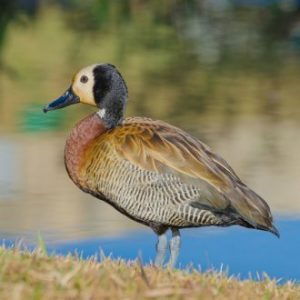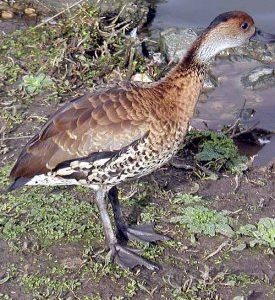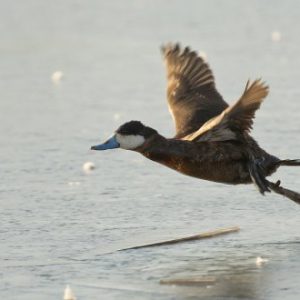Eyton Whistling Ducks, Dendrocygna Eytoni, are also referred to as Eyton’s Tree Ducks, Plumed Tree Ducks, and Grass Whistle Ducks. They are a member of the Tree Duck genus and have the long legs, long neck, and upright structure that is typical of tree ducks. They look like a combination between a goose and a duck. As their name suggests, they make a loud whistle sound.
Eyton Whistling Ducks are mostly shades of brown and fawn, but with salmon-chestnut colored markings. The most striking feature is the straw-colored plumes that twirl up from the flanks and curve gracefully over the lower back. Male and female Eyton Whistling Ducks are alike in appearance, with the straw plumes being slighter longer in the males. Their bills are pink and black, and their legs are also a salmon-pink color.
Eyton Whistling Ducks are social birds and enjoy being in a large flock. They do very well with other species and make easy and enjoyable additions to a mixed collection.
Range: Eyton Whistling Ducks are native to Northern and Eastern Australia and New Guinea.
Habitat: Eyton Whistling Ducks enjoy the company of a large flock and in the wild can usually be found during daylight hours in large groups by margins of water sources such as lagoons, lakes, and swamps. At nighttime, they fly inland to grasslands, which is where they do most of their feeding activities.
Status in the Wild: Eyton Whistling Ducks are widespread in their native range and are classified as being of Least Concern.
Status in Aviculture: Eyton Whistling Ducks are popular in aviaries and waterfowl collections.
Breeding: Eyton Whistling Ducks are not complicated to breed in captivity, and most people are quite successful when raising these birds. Breeding season takes place in spring and often can occur at one year of age. Eyton Whistling Ducks build their nests on the ground and make use of nest boxes. They appreciate some ground cover for seclusion. Clutch is usually 6-12 cream-colored eggs. Incubation is about 30 days.
Eyton Whistling Ducks are monogamous and mate for life. Both the male and female take a part in the incubation as well as with the raising and caring for the ducklings. Eyton Whistling Ducks can hybridize with other whistling ducks and other species of ducks, so care should be taken to ensure that cross-breeding doesn’t occur.
Lifespan: Eyton Whistling Ducks can live 15-20 years.
Size: Eyton Whistling Ducks look like small geese in size and stature – they can be between 17 and 24 inches in length and weigh 1.75 – 2.25 pounds.
Housing Requirements: Eyton Whistling Ducks do well in captivity and are adaptable and social birds. They will need protection from cold if kept in areas with harsh winters as these are tropical birds.
Diet: Eyton Whistling Ducks are more like geese when it comes to diet. They eat mostly a vegetarian, grass-based diet. They do sometimes dabble and eat aquatic food, but the bulk of their diet is plucked grass. A commercial waterfowl diet that is labeled for use with geese would be appropriate for Eyton Whistling Ducks.
Miscellaneous Notes: There are eight different species in the Whistling Duck or Tree Duck genus, Dendrocygna.

